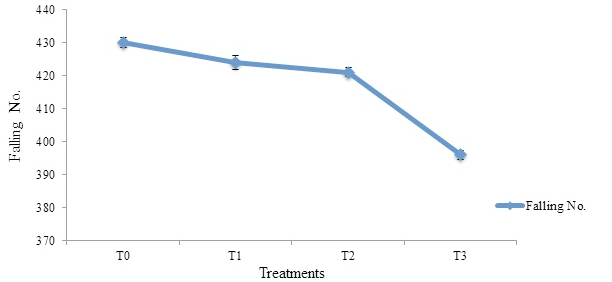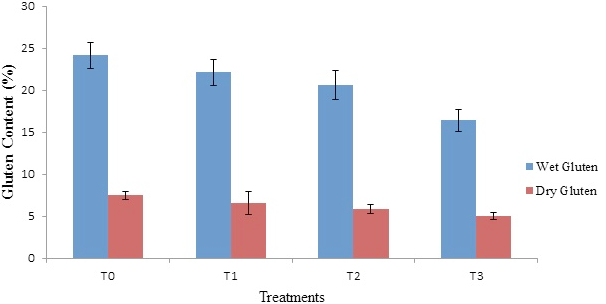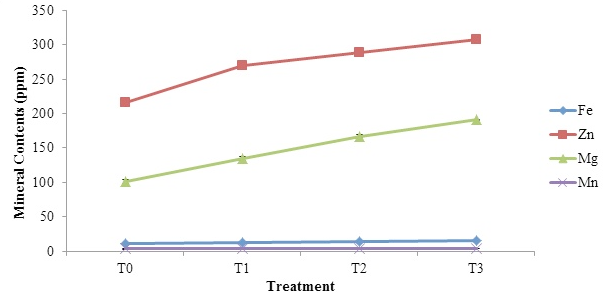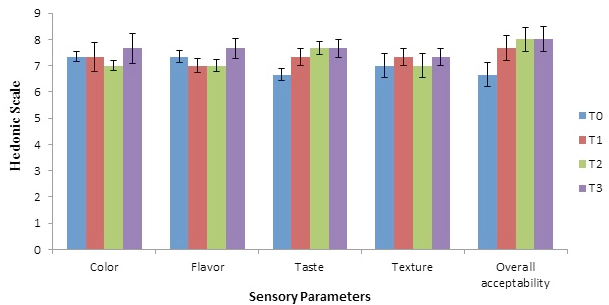Rheological and Qualitative Assessment of Wheat-Pea Composite Flour and its Utilization in Biscuits
Rheological and Qualitative Assessment of Wheat-Pea Composite Flour and its Utilization in Biscuits
Aqsa Qayyum1*, Masooma Munir1, Saeeda Raza1, Mussarat Gillani1, Saima Kanwal1, Nouman Rashid1, Amer Mumtaz1, Naeem Safdar1, Zarmina Gillani2
Schematic flow line of buscuits
Effect of pea flour addition on falling No. value of composite flours
T0 = Wheat Flour (control); T1 = Composite Flour with 5% pea flour; T2 = Composite Flour with 10% pea flour; T3 = Composite Flour with 20% pea flour
Effect of pea flour addition on wet and dry gluten contents of composite flours
T0 = Wheat Flour (control); T1 = Composite Flour with 5% pea flour; T2 = Composite Flour with 10% pea flour; T3 = Composite Flour with 20% pea flour
Effect of pea flour addition on mineral contents of wheat-pea composite flour biscuits
T0 = Biscuits without pea flour; T1 = Biscuits with 5% pea flour; T2 = Biscuits with 10 % pea flour; T3 = Biscuits with 20 % pea flour
Effect of pea flour addition on sensory parameters of wheat-pea composite flour biscuits
T0 = Biscuits without pea flour; T1 = Biscuits with 5% pea flour; T2 = Biscuits with 10 % pea flour; T3 = Biscuits with 20 % pea flour












